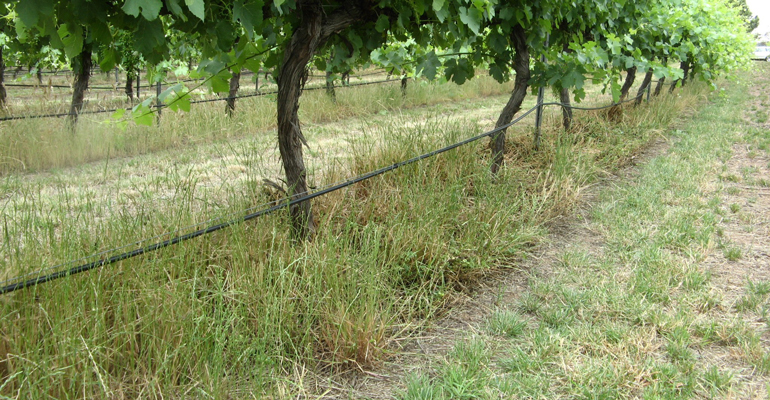The correct type of cover crop does not adversely affect vine yield and performance, a current research project has found.
In fact, in some instances, cover crops have been found to help retain moisture in the soil, increase soil nitrogen, increase soil microbial diversity and increase the abundance of earth worms.

This article was originally published by Wine Australia. Read the original article.

Lead researcher Associate Professor Tim Cavagnaro, from the University of Adelaide’s School of Agriculture, Food and Wine based at the Waite Campus, said the findings are exciting because cover crops are more cost effective than mulch – and can reduce the requirement for herbicides.
Traditionally, the soil immediately under vines has been kept free of vegetation because of concerns that weeds will compete with vines for precious water and other nutritional resources.
Associate Professor Cavagnaro’s project – which capitalises on existing (and a new) undervine cover crop field sites – is investigating the impact of different plant species planted undervine on soil moisture, soil nutrients, soil biodiversity (microbiomes), pathogenic nematodes, beneficial plant-microbe associations (mycorrhizas) and weed growth.
The team is also investigating the potential for undervine cover crops to build soil carbon stocks
‘The aim of the project is to identify practical, reliable, environmentally friendly and cost-effective undervine cover crop options that improve vine performance, soil quality and financial returns to growers.’
– Associate Professor Tim Cavagnaro
‘We want to discover the mechanisms by which undervine cover crops benefit viticultural systems, for example, nutrient cycling by soil microbes, enhanced nutrient delivery by mycorrhizas, a living mulch that lowers soil temperature and reduces evaporative loss, and the use of N-fixing legumes under vines to provide nutrients. By understanding the mechanisms we can better predict how best to establish and manage under vine cover crops, and roll this ‘green technology’ out over larger areas,’ he said.
‘Together, we hope this will help develop a more holistic approach of using cover crops – with the end goal of helping to achieve sustainable vineyard management.’
Measuring the impact of soil microbial communities
The impact on soil microbial communities is being measured by a number of innovative technologies, including NextGen sequencing, molecular analysis of key pathogenic nematodes, and mycorrhiza bioassays.
‘To study microbiomes we collect soil samples, freeze them, extract DNA and analyse the diversity of the microbes using NextGen sequencing and bioinformatic analysis.’
‘This allows us to identify the microbes present, and their relative abundance. When coupled with other data about the site (e.g. cover crop identity, soil properties, management, etc), we can then use bioinformatics and multivariate statistics to determine what factors are driving changes in the soil microbiome.’

The team is also investigating how the presence of a cover crop can support the formation of mycorrhizas in vineyard systems. Mycorrhizas are beneficial associations between specialised groups of soil fungi and the roots of most terrestrial plant species (including vines and many cover crop species). The fungi take up nutrients (especially Phosphorus, Nitrogen and Zinc) and deliver it to the plant in return for a supply of Carbon.
Finally, the team is looking at the potential to use biofumigant cover crops (mustard) undervine to determine whether they can be used to help control root knot nematodes in the soil.
Associate Professor Tim Cavagnaro said while it was still early days to report on all aspects of the project, the research project appeared to have another ace up its sleeve.
‘We have made wines from the different cover crop treatments and early indications are that there are clear impacts of undervine cover crops on the wine too – more to come!’
